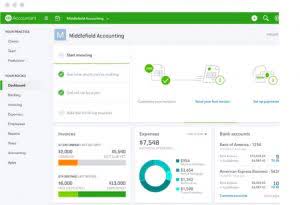
The asset turnover ratio is another key financial ratio that provides insight into a company’s efficiency in using its assets to generate revenue. In the final step, we will input these figures into our formula from earlier, which divides the average total assets by the total shareholder’s equity. Depending on the industry standard, businesses can Certified Public Accountant determine whether this ratio is higher or lower. Every investor needs to look at other companies in similar industries and glance at different financial ratios to get a better idea of where each of them stands. The DuPont analysis looks at the various components of a company’s return on equity — in other words, earnings divided by shareholders’ equity.

Understanding the Equity Multiplier: A Comprehensive Guide for Financial Analysis

This increases the company’s exposure to interest rate fluctuations and economic downturns. Higher equity multipliers typically signify that the company is utilizing a high percentage of debt in its capital structure to finance working capital needs and asset purchases. Let us now consider the same example to check how to use the equity multiplier formula in Excel with the two inputs – Total Assets and Equity Multiplier. Here, the available details help calculate the equity multiplier ratio easily in the template provided. In the formula above, there is a direct relationship between ROE and the equity multiplier. Any increase in the value of the equity multiplier results in an increase in ROE.
- The equity multiplier is one of the ratios that make up the DuPont analysis, which is a framework to calculate the return on equity (ROE) of companies.
- It’s also a valuable tool for companies themselves, as it can help them determine whether they need to adjust their financing methods.
- However, a lower ratio is appreciated as it indicates that a company is not obtaining debts to meet its asset requirements.
- It reflects how much of a company’s assets are financed by equity versus debt.
- One of the ratios under DuPont analysis is the Assets To Shareholder Equity ratio.
Why should an investor depend on DuPont analysis after looking through multiplier?

Specifically, a mere 10% of his assets are debt-funded and the remaining 90% is financed by investors. Creditors would view the company as too conservative, and the low ratio can have an unfavorable impact on the firm’s return on equity. One of the key concerns with a high equity multiplier is the increased financial risk. Companies with high leverage are more susceptible to fluctuations in interest rates, economic downturns, and changes in credit conditions.
Industry Norms and the Equity Multiplier
The equity multiplier is calculated by dividing a company’s total assets by its total equity. For example, if a company has total assets of $500 million and total equity of $200 million, the equity multiplier would be 2.5. This means that for every dollar of equity, there are $2.50 in assets, indicating a significant reliance on debt. A high equity multiplier indicates that a company is using more debt to finance its assets, which increases financial leverage and potentially higher returns but also higher financial risk. Pfizer’s equity multiplier ratio of 3.21x is similar to Walmart’s, indicating a moderate level of financial leverage. As a pharmaceutical company, Pfizer operates in a capital-intensive industry that requires significant investments in research and the equity multiplier is equal to development, manufacturing, and marketing.


Financial statements provide the data needed to calculate the equity multiplier and assess a company’s financial leverage. The balance sheet details total assets and shareholders’ equity, the essential components of the formula. These figures help stakeholders evaluate the company’s exposure to financial risk. In financial analysis, understanding a company’s leverage and financial health requires a comprehensive view that includes various ratios. In this article, we’ll explore the similarities, differences, and unique insights offered by the equity multiplier and other financial ratios. At its core, the equity multiplier is a financial leverage ratio that measures the proportion of a company’s assets that are financed by its shareholders’ equity.
- Because their assets are generally financed by debt, companies with high equity multipliers may be at risk of default.
- Not using any leverage could put the company at a disadvantage compared with its peers.
- More reliance on debt financing results in higher credit risk – all else being equal.
- In conclusion, the equity multiplier provides valuable insights into the balance between debt and equity financing.
- To match the timing between the denominator and numerator among all three ratios, the average balance is used (i.e. between the beginning and end of period value for balance sheet metrics).
- However, this could also make the company less likely to get a loan if needed.
on-1 CMA Coaching Support
- The equity multiplier is a crucial financial ratio that offers insight into a company’s financial leverage.
- The owner, Jake Caufield, wants the company to go public in the next year so that they can sell shares of the company to the public.
- Yes, a low equity multiplier can indicate that a company is less reliant on debt, which often suggests a more conservative financial strategy and lower financial risk.
- This can be risky because it can lead to financial instability if the company is unable to pay off its debts.
- And if management decides not to distribute heavy dividends and use the profit to finance most assets instead, the ratio becomes totally useless.
For example, a company that relies too heavily on debt financing will incur high debt service charges and will be https://www.bookstime.com/articles/present-value-of-an-annuity-table forced to raise additional cash flows to meet its obligations or maintain its operations. The company may also be unable to obtain further financing to expand its market reach. It needs to be used in conjunction with other financial ratios to get a more complete picture of a company’s financial health. One limitation of the equity multiplier is that it doesn’t take into account the cost of debt.
